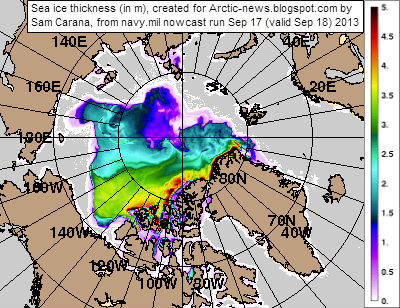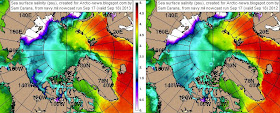By Andrew Glikson
“We’re simply talking about the very life support system of this planet.”– Hans Joachim Schellnhuber, chief climate advisor to the German Government
It is not news that we are over stretching our planetary support systems: we have known for some time. In a 2009 keynote paper in Nature titled “A safe operating space for humanity”, a group of 26 prominent scientists
showed three of nine interlinked
planetary boundaries – boundaries we must stay within to keep Earth safe – have already been overstepped (see figure 2. below).
Those boundaries include:
- climate change
- biodiversity loss
- the biogeochemical cycles.
Kevin Trenberth, chief scientist of the National Center for Atmospheric Research in Boulder, Colorado,
states:
“Some of the human-induced changes are occurring 100-times faster than they occur in nature … And this is one of the things that worries me more than climate change itself. It’s actually the rate of change that’s most worrying … Ecosystems are not prepared for this jolt … And neither are many human endeavours, built around assumptions about how hot it’s going to be, how much it’s going to rain on our croplands, and how high the seas will rise.”
 |
| Figure 2. Planetary boundaries - the colored star-like area represents the estimated current state and the corners of the red octagon circumscribed by the Earth are the estimated boundaries. Systems whose safe operating space could not yet be determined were left out. Image from: Wikipedia / A safe operating space for humanity, Rockström et al, 2009. |
This observation is dramatically demonstrated by the current rise of atmospheric greenhouse gases: this is at an unprecedented rate of 2 to 3 parts per million per year (see figure 3. below). This renders our era – the
Anthropocene – a
major oxidation event.
Such a growth rate of atmospheric greenhouse gases is extremely rare in geological history. The only analogue is the excavation of billions of tons of carbon from carbonate and shale formation hit by asteroids, such as the K-T impact
65 million years ago and massive global volcanic eruptions.
The consequences for the biosphere – the
sixth mass extinction of species – threatens to become a tragedy for human ideals and for nature.
What or who is responsible for the unfolding calamity?
As defined, the
Anthropocene is a new geological era triggered by a species which has uniquely mastered ignition. We are using it to excavate and release hundreds of billions of tons of carbon accumulated in Earth’s crust over geological eras into atmosphere.
Once a species masters sources of energy larger by orders of magnitude than its own physiological process (for Homo Sapiens this has been fire, electricity and nuclear fission), the species can hardly be expected to have the wisdom and degree of responsibility to stop its inventions from getting out of control.
 |
Figure 3. Estimates of fossil fuel resources and equivalent atmospheric CO2 levels, including (1) emissions to date;
(2) estimated reserves, and (3) recoverable resources (1 ppm CO2 ~ 2.12 GtC). Hansen, 2012, figure 1; http://www.columbia.edu/~jeh1/mailings/2012/20120127_CowardsPart1.pdf |
Unique among all species, humans adopted fire and combustion as their source of energy and power over nature. Over the last two million years, camped around fires, watching the flames, human imagination has grown to inquire, perceive future possibilities, develop fears, the craving for immortality, and the concept of gods. Fire has imparted a mythological quality to the human mind.
Once a stable climate was established in the Holocene (about 10,000 years ago), allowing cultivation and production of surplus food, this craving for omnipotence and omniscience was expressed by the building of monuments to immortality, the pyramids, as well as endless wars acquiring loot for this purpose.
Spiritual pantheism by pre-historic people such as the Australian Aboriginals has been transformed into admiration of sky gods and monotheism, then into crass materialism and the space cult.
But space exploration has taught us no other planet exists in the solar system on which the conditions exist for advanced life of the type hosted by Earth.
Since the greenhouse effect and its underlying laws of physics and chemistry were
decoded in the 19th century, the question has arisen: to what extent will societies and their leaders accept the implications of the science for human industry and human future? Will the scientific method itself and the enlightenment form the basis of future decisions?
In 21st century Australia, the answer has been a resounding “no”.
Government and corporate decisions on climate change are being influenced by misrepresentations of the evidence. What began some 20 years ago as demonstration of solid empirical evidence has
deteriorated to media-controlled
debate replete with misunderstandings of the basic laws of physics, paleo-climate science, climate science, biological and ecological principles.
 |
Figure 4. Relations between CO2 rise rates and mean global temperature rise rates during warming periods,
including the Paleocene-Eocene Thermal Maximum, Oligocene, Miocene, late Pliocene, Eemian (glacial termination),
Dansgaard-Oeschger cycles, Medieval Warming Period, 1750-2012 and 1975-2012 periods. |
A multitude of media outlets and hundreds of websites proliferate notions ignorant of peer-reviewed science. The lesson of numerous attempted debates with those who deny the reality of global warming, or attempt to attribute it to natural non-human factors, is that those entertaining these notions cannot be dissuaded by any amount of scientific evidence.
Climate change misconceptions include claims that:
- temperature rise came before CO2 rise during the glacial terminations and that therefore the current rise of temperature is not the result of CO2 rise. However, the effects of CO2and temperature variations are intertwined. During the last ~400,000 years glacial eras were terminated by periods of intense solar activity, affecting decreased CO2 solubility in warming water and thereby a rise in CO2 levels of the atmosphere. By contrast climate developments since the 18th century, when there was negligible or no rise in solar energy hitting the earth, were triggered by the anthropogenic greenhouse effect of the release of 560 billion tonnes of carbon, consistent with the basic laws of physics.
- global warming is a recovery from the Little Ice Age. However, the Little Ice Age was caused when sunspot activity nearly ceased between 1650 and 1700, depressing global temperatures by 0.2-0.3C relative to preceding periods. By contrast, global warming from about 1975 has tracked toward more than 1.5C over the continents relative to pre-industrial temperatures.
- cosmic rays flux affects warming. However, a dominant solar effect on the climate since 1970 is ruled out by measurements of solar radiation. The incidence of cosmic rays, which oscillate reciprocally with the 11 years sunspot cycle, has been shown to have minor effects on cloud nucleation and has not varied significantly since the mid-20th century.
- carbon dioxide is emitted mainly from volcanoes. However, according to the United States Geological Survey (2012), sub-aerial and sub-marine volcanism emits approximately 150–260 million tons of CO2 a year. Anthropogenic emissions total about 35 billion tons CO2 a year.
Meanwhile, the unthinkable consequences of 4 degrees Celsius and higher temperature rise on the terrestrial atmosphere-ocean system
have already begun. We are seeing a series of extreme weather events, reflecting the rise in energy/temperature of the atmosphere-ocean system – the “
new normal”.
 |
| Andrew Glikson |
Does responsibility lie with vested interests and fossil fuel lobbies promoting carbon saturation of the atmosphere? Does it lie with media barons and their mouthpieces hijacking the information systems of democracies, or with
cowardly political “leaders” – presiding over extensive demise of future generations? Or does responsibility lie with all of us, with the species?
Deceived by pseudoscientific misconceptions, Homo “sapiens” continues to march toward a cliff, taking much of nature with it.













































